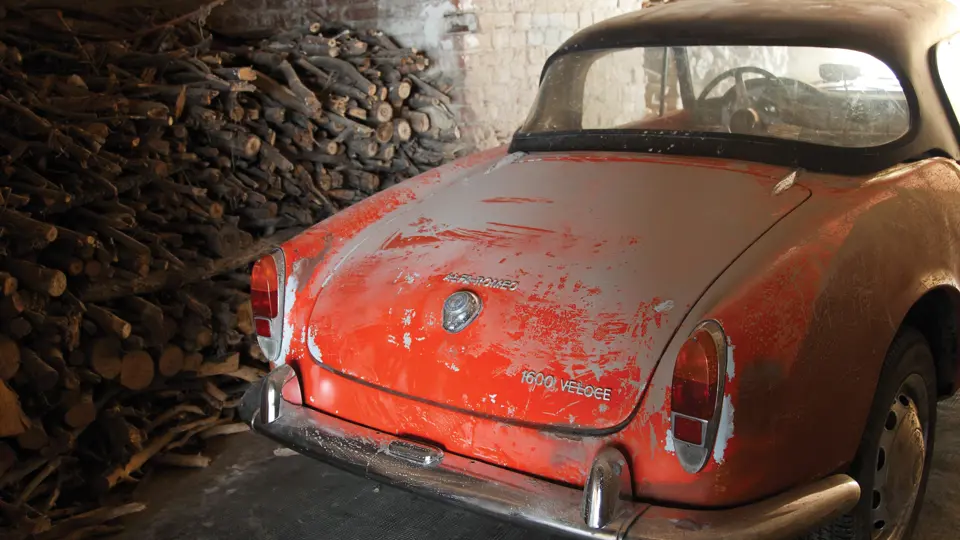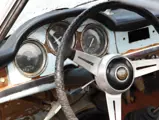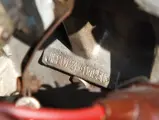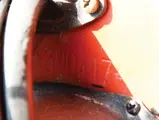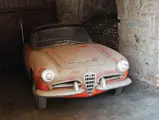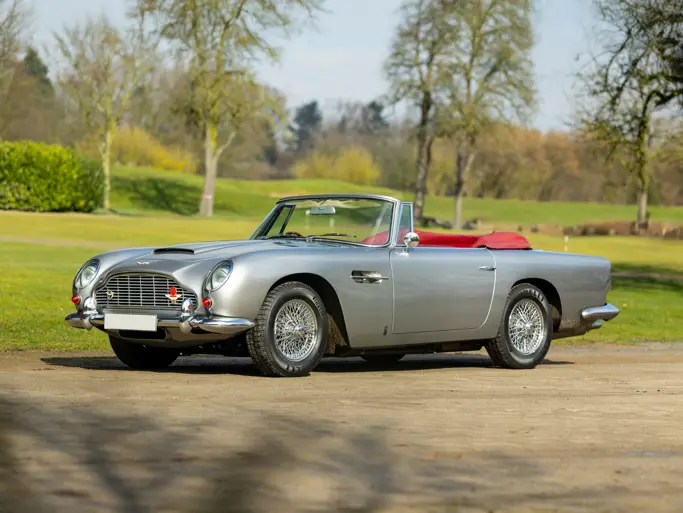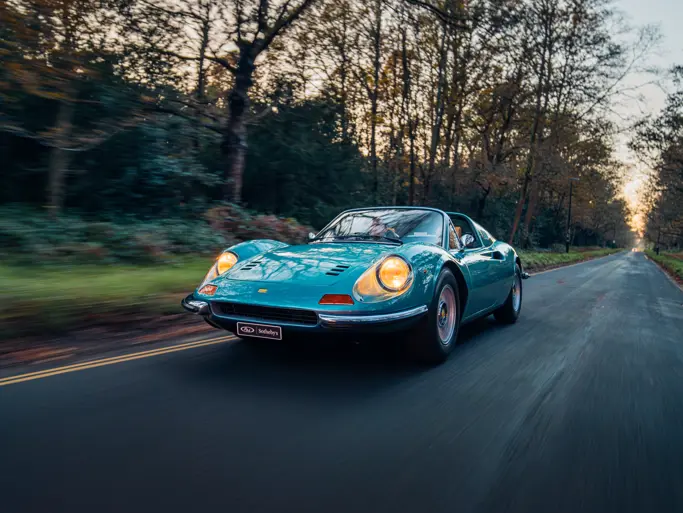
1965 Alfa Romeo Giulia 1600 Spider Veloce by Pininfarina
{{lr.item.text}}
€44,800 EUR | Sold
{{bidding.lot.reserveStatusFormatted}}
- Last year of the iconic post-war design
- Presented in “barn find” condition
- Original matching-numbers engine and hardtop
- Dernière année de cette icone d'après-guerre
- Présentée en état « sortie de grange »
- Moteur d'origine, matching numbers et hard-top
112 bhp 1,570 cc DOHC inline four-cylinder engine, synchronised five-speed manual transmission, front long and short control arms, coil springs, and anti-roll bar with rigid rear axle suspension, and hydraulic front disc and rear drum brakes. Wheelbase: 2,250 mm
Moteur quatre-cylindres en ligne, 1 570 cm3, 112 ch, deux ACT, boîte manuelle synchronisée cinq rapports, suspension avant par bras inégaux, ressorts hélicoïdaux et barre antiroulis, essieu arrière rigide, freins hydrauliques à disques à l'avant et à tambours à l'arrière. Empattement: 2 250 mm.
Alfa Romeo ushered in the post-war era with a new twin-cam, four-cylinder engine design, which was a configuration that would dominate the Italian automaker’s portfolio for decades to come. After initially arriving in the automaker’s Giulietta line-up in the mid-1950s, the twin-cam would go on to power the updated Giulia range, and it would remain there until the early 1990s.
Arguably, the most Italian way to enjoy the twin cam’s rev-happy nature con brio was to experience it alfresco in the Pininfarina-designed Spider, which first arrived as a Giulietta in 1955, before being rechristened as a Giulia Spider in 1962. The penultimate variant arrived two years later as the Giulia Spider Veloce, when the Roadster received a new, 1,570-cubic centimetre variant of this twin-cam four-cylinder, which was mated, necessarily, to uprated front disc brakes. This configuration carried through to the end of the Giulia Spider’s run, when the stately car was replaced by the rather more controversial osso di sepia, or Duetto.
This 1965 Spider Veloce, offered here in “barn find” condition, was amongst the last 600 to be ordered, and as its serial number indicates, it is a true Veloce (tipo 101.18). It was assembled on 3 March 1965 and then delivered new in the middle of that summer to the Alfa Romeo dealer in Frankfurt, Germany. Although it was originally swathed in AR322 Sky Blue with a black interior, it was repainted in a more traditional Alfa Romeo red. It retains a black interior, but the red seat piping is likely not original.
Although the Giulia Spider Veloce is not currently running, it features its original matching-numbers, 1,570-cubic centimetre, twin-cam engine. The Spider Veloce is a very popular vintage roadster, and this one represents an excellent starting point for a thorough restoration.
Alfa Romeo est entrée dans la période d'après-guerre avec un nouveau moteur quatre-cylindres double arbre dont la configuration allait être reprise sur toute la gamme du constructeur italien pendant plusieurs dizaines d'années. Initialement installé dans la gamme Giulietta au milieu des années 1950, ce moteur allait équiper toutes les Giulia et y rester jusqu'au début des années 1990.
Incontestablement, la façon la plus italienne de profiter de la nature vivante de ce moteur était de prendre le volant du Spider dessiné par Pininfarina, présenté comme Giulietta en 1955 avant d'être renommé Giulia Spider en 1962. L'avant-dernière version est arrivée deux ans plus tard sous la forme de la Giulia Spider Veloce, quand le roadster a reçu une nouvelle déclinaison 1 570 cm3 du quatre-cylindres double arbre ainsi que de nouveaux freins avant à disques. Cette configuration n'a plus changé jusqu'à la fin de la production du Spider Giulia, quand il a été remplacée par le cabriolet osso di sepia, ou Duetto.
Ce Spider Veloce 1965, proposé en état « sortie de grange », faisait partie des 600 derniers exemplaires commercialisés, et son numéro de série confirme qu'il s'agissait d'une vraie Veloce (tipo 101.18). Il est sorti d'usine le 3 mars 1965 et a été livré neuf au milieu de l'été au distributeur Alfa Romeo de Francfort, en Allemagne. Habillé à l'origine d'une teinte bleu clair AR322 avec intérieur noir, il a été ensuite repeint dans un plus traditionnel rouge Alfa Romeo. Il comporte une sellerie noire, mais les passepoils rouges des sièges ne sont probablement pas d'origine.
Bien que cette Giulia Spider Veloce ne soit pas tournante, elle est équipée de son moteur d'origine, à numéros concordants, 1 570 cm3 double arbre. Le Spider Veloce est un roadster particulièrement apprécié, et celui-ci représente un excellent point de départ pour une restauration complète.

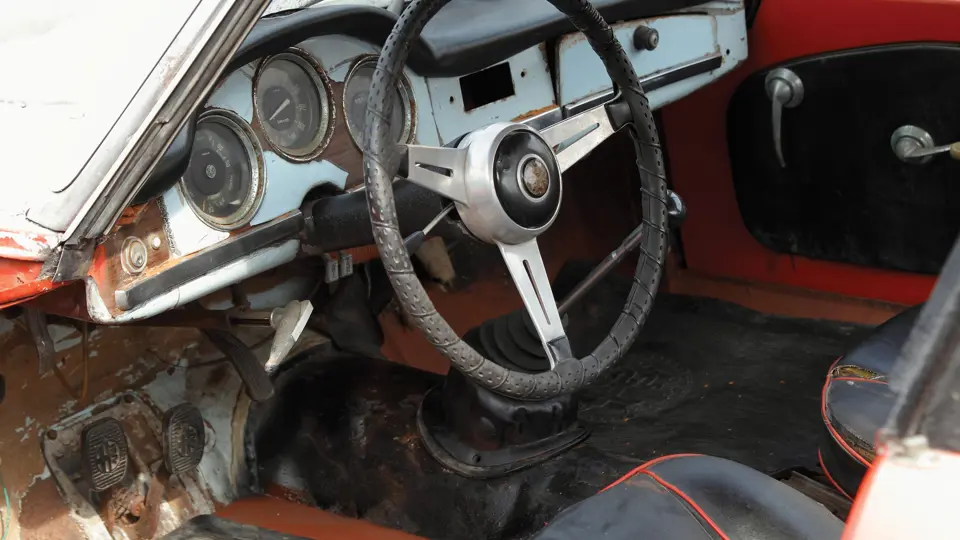
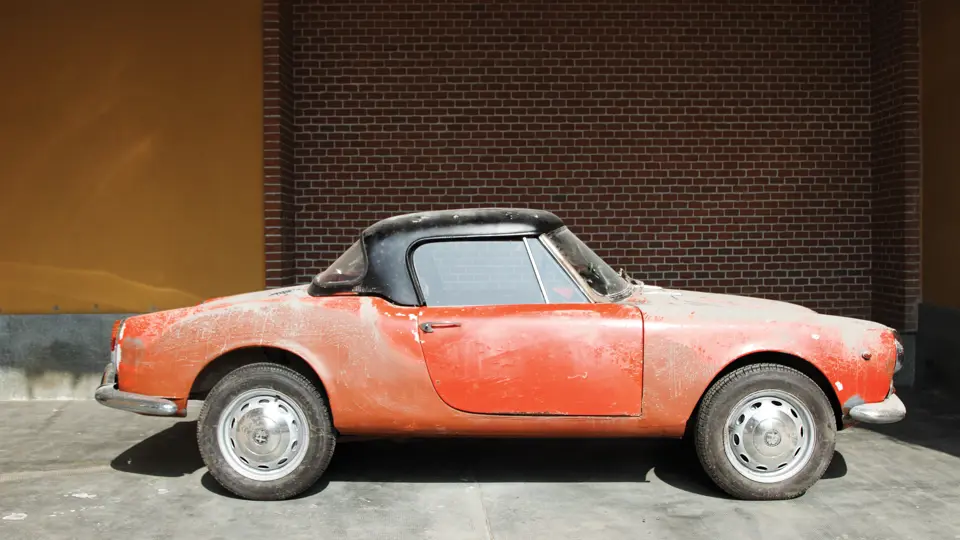

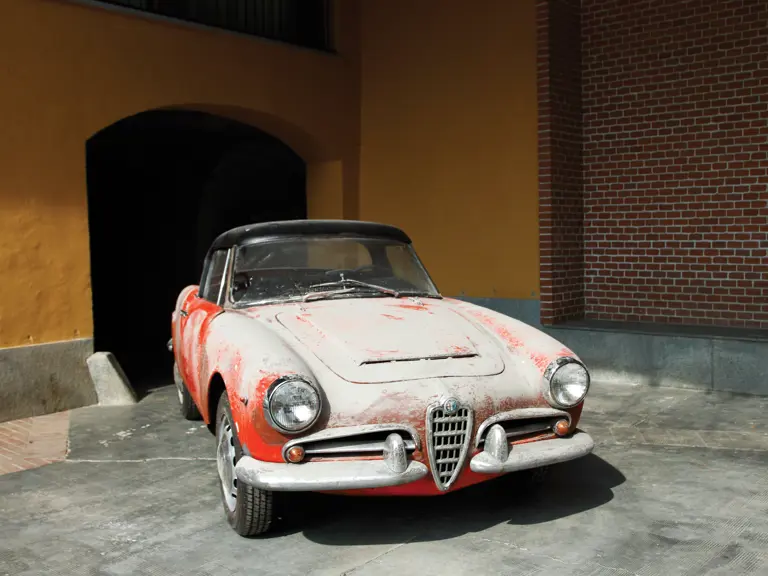
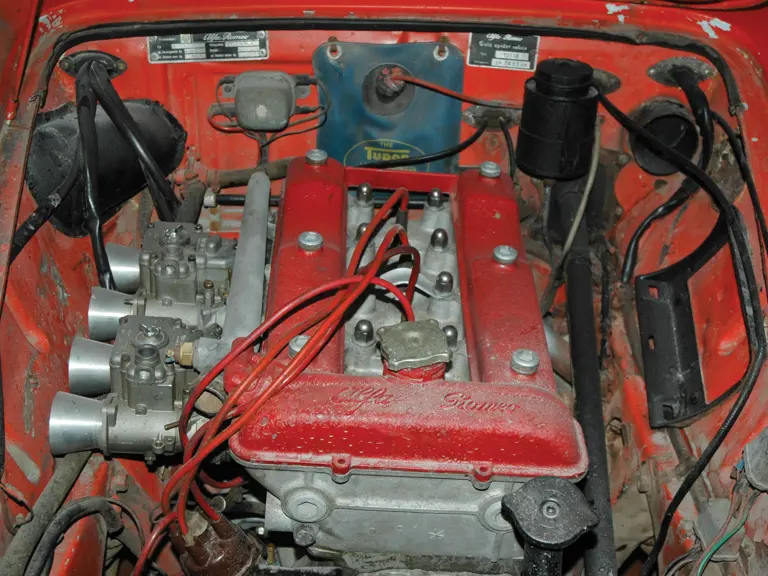
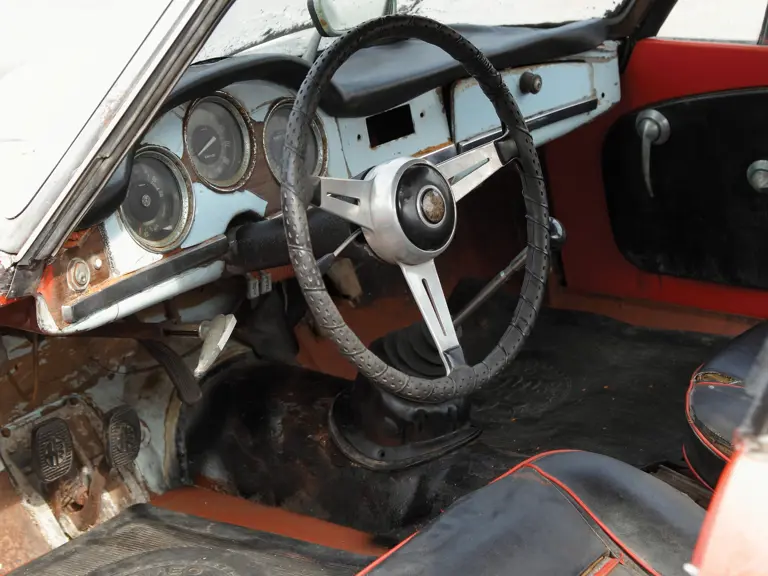


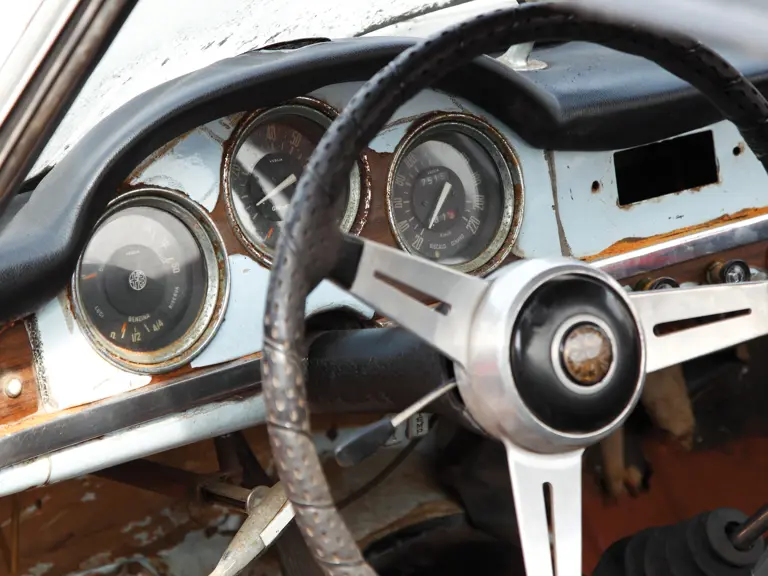
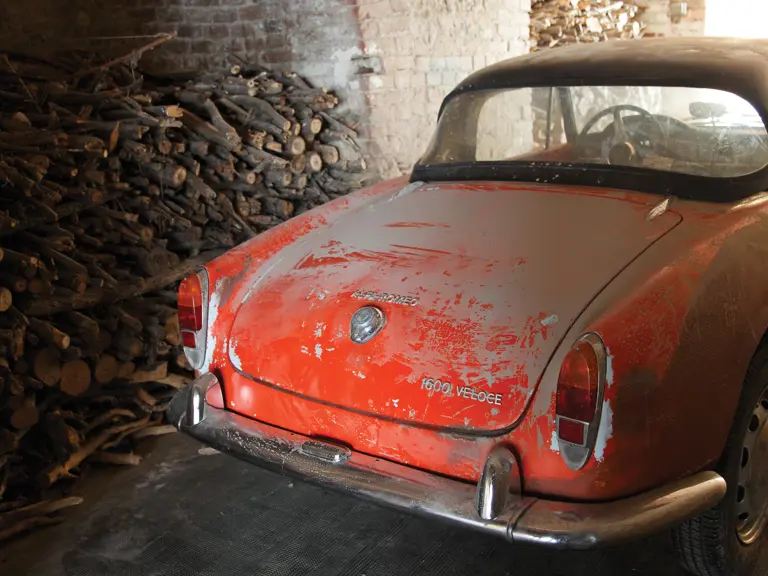
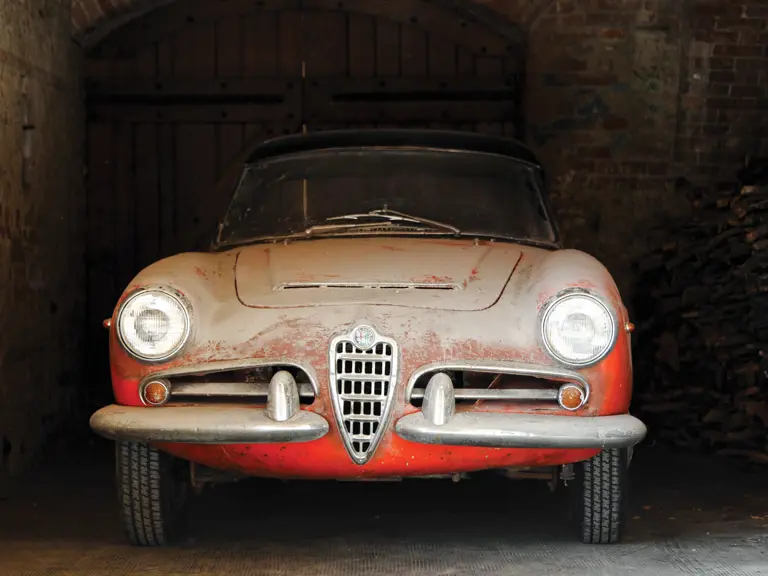
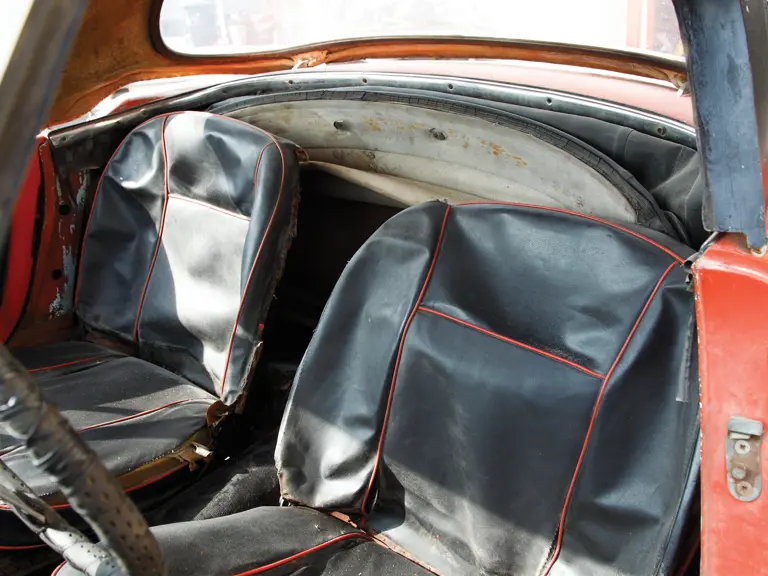


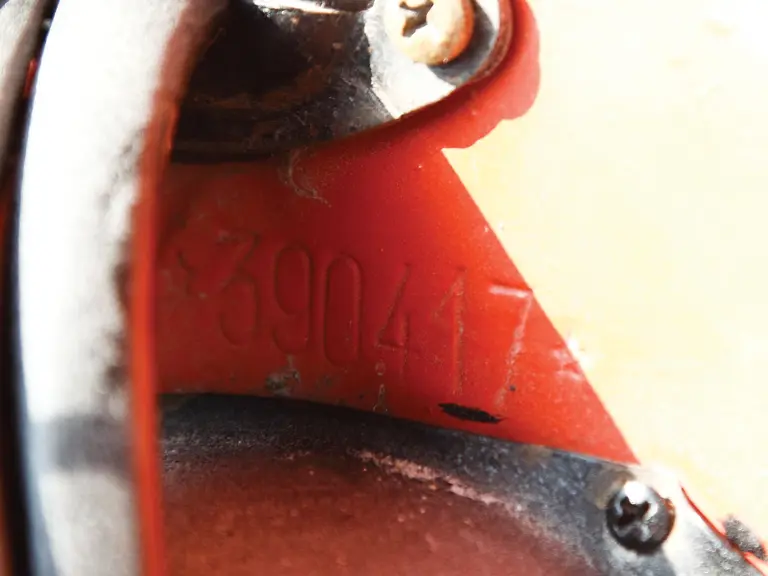
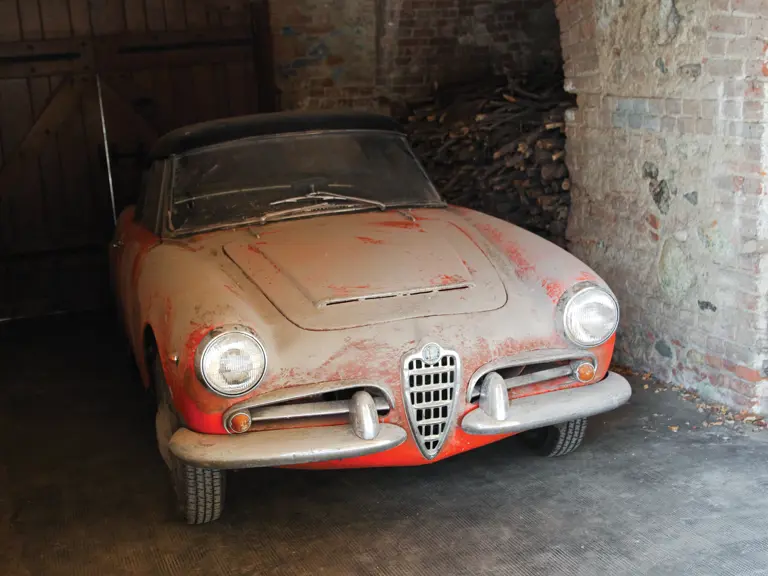
 | Monte Carlo, Monaco
| Monte Carlo, Monaco


